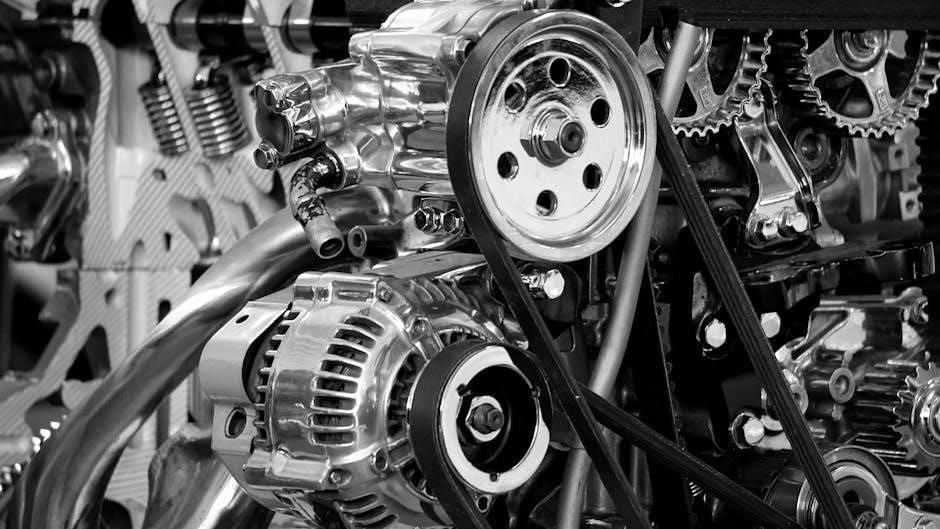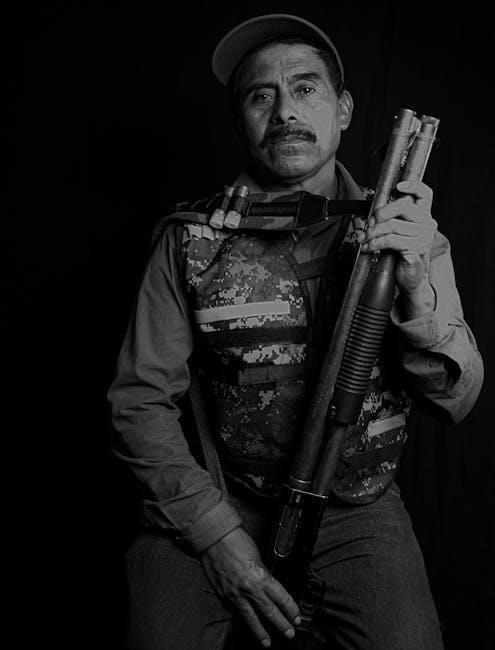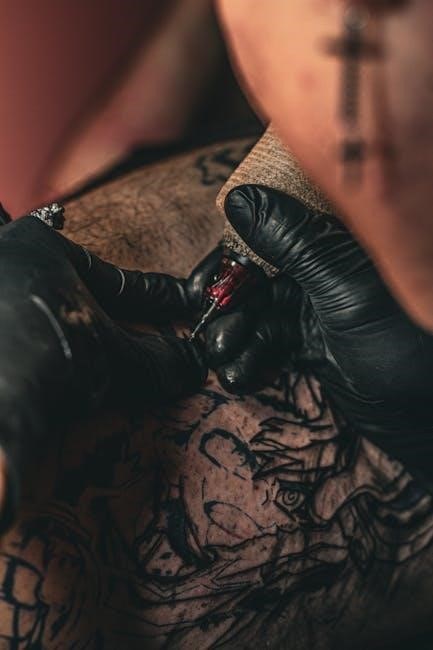mg34 and mg42 machine guns pdf
Category : PDF
MG34 and MG42 Machine Guns: A Comparative Analysis
The MG34 and MG42, iconic German machine guns of World War II, represent distinct approaches to firepower. This analysis delves into their design, manufacturing, and battlefield performance, comparing their strengths and weaknesses. Ultimately, we seek to understand which weapon proved superior in the crucible of war.
The MG34 and MG42 stand as iconic symbols of German military might during World War II. These machine guns, both chambered for the 7.92x57mm Mauser cartridge, represent a pivotal shift in infantry firepower doctrine. The MG34, entering service in the 1930s, was conceived as a versatile, general-purpose machine gun (GPMG), capable of fulfilling both light and heavy machine gun roles. Its design reflected precision engineering and high-quality materials.
However, the demands of wartime production soon revealed the MG34’s limitations. Its complex manufacturing process made it expensive and time-consuming to produce. This led to the development of the MG42, a radical departure in design philosophy. The MG42 prioritized ease of manufacturing, utilizing stamped metal parts and simplified construction techniques. While sacrificing some of the MG34’s refinement, the MG42 offered increased production speed and lower costs, without compromising battlefield effectiveness. Both machine guns, however, had their place in combat.
This analysis will explore the design, development, and operational characteristics of these two legendary weapons, comparing their strengths and weaknesses to determine their relative merits in the context of World War II.
Design and Development of MG34
The Maschinengewehr 34, or MG34, emerged from a need for a versatile and effective light machine gun. Developed by Mauser, with contributions from other firms like Rheinmetall, it was officially adopted by the Wehrmacht in 1934. The MG34 was innovative for its time, being one of the first true general-purpose machine guns. It could be employed as a light machine gun with a bipod or mounted on a tripod for sustained fire support, blurring the lines between traditional light and heavy machine gun roles.
Its design showcased high-quality materials and precision engineering. Many components were machined from solid steel, resulting in a robust and reliable weapon. The MG34 featured a recoil-operated mechanism and a rotating bolt, contributing to its smooth operation and accuracy. It could feed from either belts or drums, enhancing its adaptability in various combat scenarios. A selective fire capability allowed the operator to choose between semi-automatic and fully automatic modes.
However, this emphasis on quality came at a cost. The MG34’s complex manufacturing process required extensive machining and skilled labor, making it expensive and time-consuming to produce. This became a significant drawback as Germany prepared for and engaged in large-scale warfare, ultimately driving the need for a more economical alternative.
Design and Development of MG42
The MG42, short for Maschinengewehr 42, was conceived as a direct response to the MG34’s manufacturing complexities. As World War II intensified, the German military needed a machine gun that could be produced quickly and cheaply, without sacrificing excessive combat effectiveness. Development was undertaken by Mauser, with a focus on simplifying the design and utilizing more efficient manufacturing techniques.
The MG42 embraced stamped metal parts and welding extensively, replacing the MG34’s machined components. This significantly reduced production time and cost. While tolerances were relaxed compared to the MG34, the MG42 retained a high degree of reliability in combat conditions. Its roller-locked mechanism, a departure from the MG34’s rotating bolt, proved robust and contributed to its exceptionally high rate of fire.
The design also incorporated a simplified barrel change system, allowing for rapid replacement of overheated barrels during sustained fire. Like the MG34, the MG42 was a general-purpose machine gun, capable of being used in various roles. It primarily fed from belts, reflecting its focus on high-volume fire support. Although lacking a selective fire option, its blistering rate of fire compensated for the absence of semi-automatic capability in most combat situations.
The MG42’s design philosophy prioritized mass production and battlefield effectiveness over intricate craftsmanship, making it a game-changer in machine gun design.
Manufacturing Differences: MG34 vs MG42
The contrast in manufacturing philosophies between the MG34 and MG42 is stark. The MG34 epitomized traditional gunsmithing, relying heavily on machined parts crafted to exacting tolerances from solid metal blanks. This resulted in a weapon of refined quality and intricate design, but it was also time-consuming and expensive to produce. Manufacturing the MG34 required skilled labor and a significant amount of raw materials, rendering it unsustainable in the face of wartime demands.
The MG42, conversely, embraced modern manufacturing techniques to prioritize speed and economy. Stamped metal components, mass-produced with relatively simple machinery, replaced many of the MG34’s machined parts. Welding played a crucial role in assembling these components, further reducing the need for skilled labor. While the MG42’s tolerances were looser compared to the MG34, its design was sufficiently robust to maintain acceptable reliability under battlefield conditions.
The shift to stamped construction significantly shortened production time. The MG34 took approximately 150 hours to manufacture and cost 327 Reichsmarks, while the MG42 required only 75 hours and cost 250 Reichsmarks. The MG42 also used considerably less raw material, roughly 27.5 kg versus the MG34’s 49 kg. This reduction in production time, cost, and material consumption allowed Germany to produce the MG42 in much larger numbers, making it a crucial component of their war effort.
In essence, the MG34 represented the pinnacle of pre-war gunmaking, while the MG42 foreshadowed the future of mass-produced weaponry.
Reliability in Combat Conditions
The brutal realities of combat exposed a critical difference between the MG34 and MG42: reliability. The MG34, with its finely machined parts and tight tolerances, proved susceptible to malfunctions in adverse conditions. Mud, dust, extreme cold, or humidity could easily disrupt its intricate mechanism, leading to jams and stoppages. The MG34 demanded meticulous maintenance and cleaning, a challenging requirement in the chaos of battle.
The MG42, designed for mass production and ruggedness, exhibited significantly greater reliability. Its looser tolerances allowed it to function more consistently in the face of dirt and grime. The stamped metal construction, while less refined, proved more resilient to the stresses of combat. Gunners lauded the MG42’s ability to keep firing even when neglected, a vital attribute in prolonged engagements.
Anecdotal accounts from veterans corroborate the MG42’s superior reliability. One MG34/MG42 gunner noted the MG42’s barrel change was considerably easier which is also important in maintaining reliable fire. While the MG34 was undoubtedly a well-crafted weapon, its delicate nature rendered it less suitable for the harsh conditions of the Eastern Front or the sandy terrain of North Africa.
In the final analysis, the MG42’s enhanced reliability made it a more dependable weapon for the average soldier, contributing significantly to its widespread adoption and effectiveness on the battlefield. The MG34’s precision came at the cost of practicality, a trade-off that favored the MG42 in the unforgiving environment of war.
Rate of Fire Comparison
One of the most distinguishing characteristics between the MG34 and MG42 lies in their respective rates of fire. The MG34, with its more controlled firing mechanism, boasted a rate of fire of approximately 800 to 900 rounds per minute. This rate, while still considerable, allowed for a degree of accuracy and control, particularly in sustained fire scenarios.
The MG42, in contrast, was designed for overwhelming firepower. Its simplified mechanism enabled a blistering rate of fire, ranging from 1,200 to 1,500 rounds per minute. This exceptionally high rate earned it the infamous nickname “Hitler’s Buzzsaw,” reflecting its devastating effect on enemy troops. The MG42’s rapid fire created a wall of lead, providing superior suppressive fire and making it difficult for enemy soldiers to maneuver or return fire effectively.
However, this increased rate of fire came with certain trade-offs. The MG42’s high cyclic rate led to faster barrel overheating, necessitating frequent barrel changes. While the MG42’s barrel change mechanism was simpler than the MG34’s, the need for more frequent changes could still disrupt sustained fire. The increased rate of fire also consumed ammunition at a faster pace, requiring more frequent resupply.
Ultimately, the choice between the MG34 and MG42’s rate of fire depended on the tactical situation. The MG34’s lower rate provided a balance of accuracy and firepower, while the MG42’s higher rate offered unparalleled suppressive capabilities, albeit at the cost of increased ammunition consumption and barrel wear.
Barrel Change Mechanisms
Both the MG34 and MG42 were designed with the capability for rapid barrel changes, a crucial feature for sustained fire during combat. However, the mechanisms employed differed significantly, reflecting their respective design philosophies. The MG34 utilized a more complex and time-consuming process. The gunner had to rotate the receiver counter-clockwise from the barrel shroud, remove the hot barrel, insert a fresh one, and then rotate the receiver back into its firing position.
The MG42, prioritizing speed and simplicity, featured a more streamlined barrel change mechanism. A lever or catch was used to quickly unlock the barrel, allowing the gunner to eject the hot barrel and insert a new one with minimal delay. This significantly reduced the downtime required for barrel changes, contributing to the MG42’s superior rate of sustained fire. Reports from gunners suggest that the MG42’s system was considerably easier and faster to operate, especially under the stress of combat.
The MG42’s efficient design saved valuable time, allowing the gunner to quickly resume firing and maintain suppressive fire on the enemy. This ease of use was particularly important given the MG42’s higher rate of fire, which led to more frequent barrel overheating. The simpler mechanism also contributed to the MG42’s overall reliability, as it was less prone to malfunction or damage.
Ammunition and Feeding Systems
Both the MG34 and MG42 utilized the 7.92x57mm Mauser cartridge, a standard German military round known for its effectiveness. However, their feeding mechanisms differed, impacting their operational characteristics. The MG34 employed a dual-feed system, accepting both belts and drum magazines. This offered flexibility, allowing gunners to adapt to various combat scenarios. Belts could be loaded in 50-round or 250-round configurations, while drum magazines provided a more compact option for mobile operations.
The MG42 simplified the feeding system, primarily relying on belts. While it could technically use a drum magazine adapter, it was not a common practice. The standard ammunition belts came in 50-round or 250-round lengths, offering a high capacity for sustained fire. The belt-fed system contributed to the MG42’s higher rate of fire, ensuring a continuous stream of ammunition. Furthermore, the MG42 used a simplified belt-feeding mechanism to enhance its reliability.

The choice of ammunition boxes also played a crucial role. German soldiers typically carried ammunition in boxes containing 250 rounds. Each loaded box weighed a little over 10 kilograms, and the expectation was that four boxes, totalling 1,000 rounds, could be carried by one man. This highlights the importance of ammunition supply and logistics in supporting machine gun operations.
Deployment and Usage
The MG34 and MG42 served as general-purpose machine guns (GPMGs), integral to German infantry tactics during World War II. Their deployment reflected this versatility, with both weapons employed in various roles, from providing suppressive fire to engaging enemy infantry and light vehicles. The MG34, initially conceived as a universal weapon, was deployed across different branches of the Wehrmacht, including infantry, armored units, and even aircraft.

The MG42, designed to be a more cost-effective and rapidly produced alternative to the MG34, gradually replaced the earlier model in many infantry units. Its high rate of fire made it particularly effective for suppressing enemy positions and disrupting attacks. The MG42’s intimidating sound earned it nicknames like “Hitler’s Buzzsaw,” reflecting its psychological impact on opposing forces. Both machine guns were typically deployed in support of infantry squads, providing covering fire during advances or defensive actions.
Furthermore, both the MG34 and MG42 could be mounted on vehicles, increasing their firepower and mobility. Tanks, armored personnel carriers, and even motorcycles were fitted with these machine guns to provide additional offensive or defensive capabilities. The MG34 found particular use in tanks, even after the introduction of the MG42, likely due to its more refined construction and suitability for enclosed spaces.
In essence, the MG34 and MG42 were central to German military doctrine, providing the Wehrmacht with a flexible and potent means of delivering sustained firepower on the battlefield. Their widespread deployment and adaptability underscore their significance in shaping the course of World War II combat.
Weight and Dimensions

Understanding the weight and dimensions of the MG34 and MG42 is crucial for appreciating their handling characteristics and logistical implications. The MG34, known for its robust construction, weighed in at approximately 12.1 kilograms (26.7 pounds) without ammunition. Its overall length measured around 1219 millimeters (48 inches), making it a substantial weapon to carry and maneuver, especially for infantry soldiers on the move. While its weight contributed to stability during firing, it also posed a challenge for sustained operations, particularly in difficult terrain.
The MG42, designed with simplified manufacturing processes, achieved a slight reduction in weight compared to its predecessor. It weighed approximately 11.6 kilograms (25.6 pounds), a modest but noticeable difference for soldiers carrying the weapon and its associated ammunition. The MG42’s overall length was similar to the MG34, maintaining a comparable profile on the battlefield. This reduction in weight, while seemingly small, contributed to improved portability and reduced fatigue for machine gunners during prolonged engagements.
Both machine guns required significant logistical support due to their ammunition consumption and weight. Each loaded ammunition box added considerable weight, necessitating a team effort to keep the guns supplied during combat. The dimensions of the weapons also affected their transport and storage, requiring specialized containers and vehicles to efficiently move them across the battlefield.
Cost and Production Time
One of the key drivers behind the development of the MG42 was the need to reduce the cost and production time associated with the MG34. The MG34, with its intricate design and reliance on machined parts, proved to be an expensive and time-consuming weapon to manufacture. Producing an MG34 required approximately 150 man-hours and cost around 327 Reichsmarks. This placed a significant strain on Germany’s wartime industrial capacity, necessitating a more efficient alternative.
The MG42 addressed these concerns through the adoption of stamped metal parts and simplified construction techniques. These changes dramatically reduced both the cost and production time. An MG42 could be manufactured in approximately 75 man-hours, roughly half the time required for an MG34. The cost was also significantly lower, at around 250 Reichsmarks per unit. This reduction in cost and production time allowed Germany to produce a far greater number of machine guns, bolstering its firepower on the battlefield.
The shift to stamped metal parts also reduced the amount of raw materials needed for each weapon. The MG42 required approximately 27.5 kilograms of raw materials, compared to the MG34’s 49 kilograms. This conservation of resources further streamlined production and alleviated pressure on Germany’s supply chains.

The cost and production time savings achieved with the MG42 were crucial factors in its widespread adoption. By producing a more affordable and readily available machine gun, Germany was able to equip its forces with a weapon that provided a significant advantage in terms of firepower and sustainability. The MG42’s efficiency in production made it a vital asset to the German war effort.
Which Machine Gun Was Superior?
Legacy and Modern Usage
The MG42’s innovative design and devastating firepower left an indelible mark on the history of machine guns. While the MG34, a groundbreaking weapon in its own right, faded from widespread use after World War II, the MG42’s influence continues to be felt in modern firearms design. Its stamped metal construction, quick barrel change system, and high rate of fire became benchmarks for subsequent general-purpose machine guns.
Several modern machine guns owe their lineage to the MG42, most notably the MG3, which is directly derived from the MG42 and remains in service with numerous armed forces around the world. The MG3 retains the MG42’s basic design, including its roller-locked recoil system and belt-fed ammunition system. Its continued use is a testament to the effectiveness and enduring relevance of the original MG42 design.
Beyond direct derivatives, the MG42’s influence can be seen in the design of other modern machine guns, such as the M60 and the FN MAG. These weapons incorporate elements of the MG42’s design philosophy, including its emphasis on stamped metal construction and its high rate of fire. The MG42’s legacy extends beyond military applications, as its design principles have also been applied to civilian firearms.
The MG42’s impact on military doctrine is also significant. Its high rate of fire and general-purpose capabilities revolutionized infantry tactics, providing soldiers with unprecedented firepower. The MG42’s ability to be used as both a light and heavy machine gun made it a versatile and valuable asset on the battlefield. Its legacy continues to shape modern military thinking on the role of machine guns in combat.
